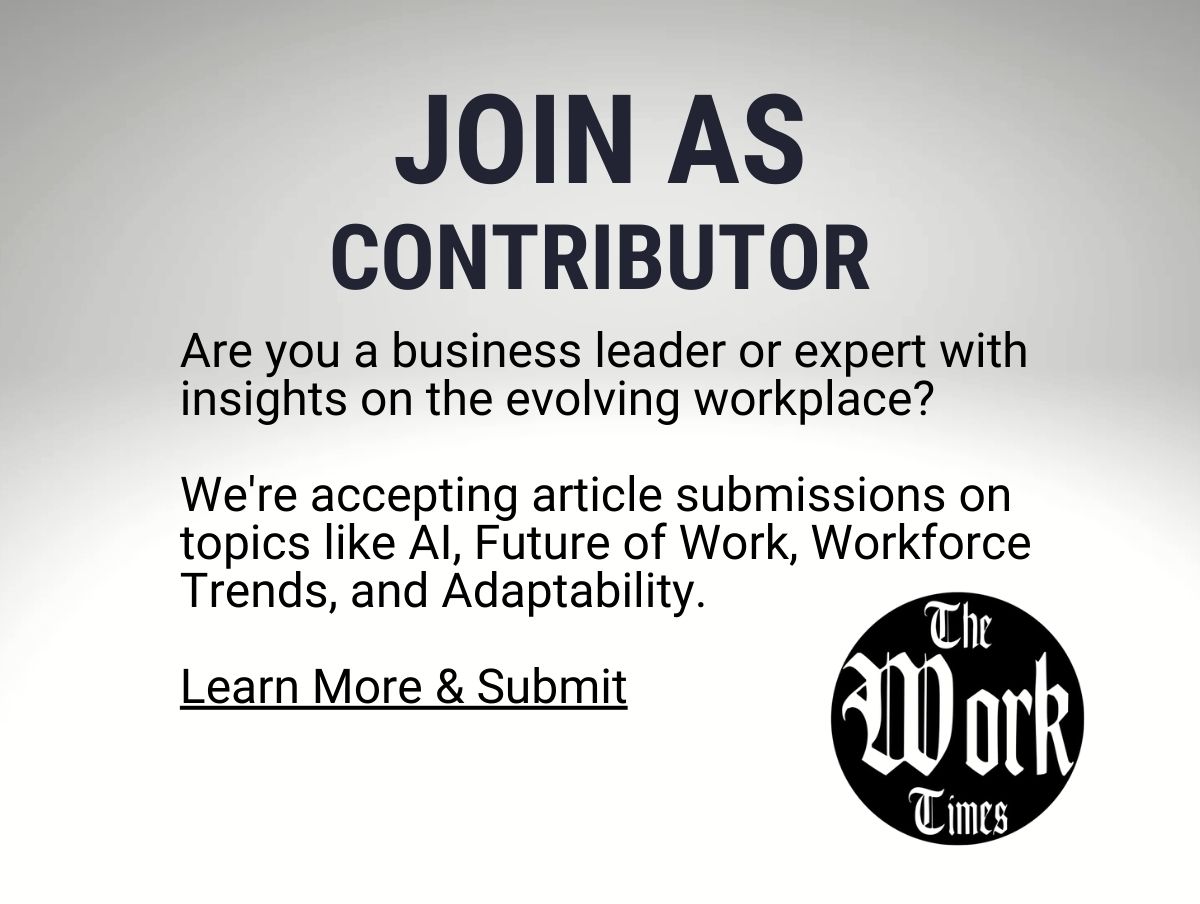Robinhood’s $100M Prediction-Market Moment: What It Means for Work, Talent and Platform Strategy
When a retail-broker turned cultural phenomenon announces that a new line of business is pulling roughly $100 million in annualized revenue, people take notice. When that business is prediction markets — contracts that let users bet on outcomes from elections to economic data — and the company doing the announcing says it will lean on partners rather than build its own exchange, the conversation shifts from headline to workplace strategy.
A new revenue stream, a new set of choices
Robinhood is not the first firm to discover the financial and engagement potential of prediction markets. But the scale matters. $100 million of annualized revenue signals more than a novelty: it signals product-market fit at meaningful scale, and it reshapes priorities across product, operations, compliance, and talent acquisition.
This is the kind of business inflection that prompts companies to reassess core capabilities. Do you build the infrastructure you need in-house to own the stack, or do you compose a platform out of partners and focus internal resources on distribution and customer experience? Robinhood’s public answer — partner with exchanges like Kalshi for market infrastructure — is a modern manifesto for a modular enterprise era.
Prediction markets 101 — and why they matter to work
Prediction markets aggregate collective beliefs about future events and assign prices that reflect perceived probabilities. They are, at their best, a real-time thermometer of expectation. For platforms like Robinhood, prediction markets drive engagement, time-on-platform, and — crucially — direct monetization through fees, spreads, and potentially ancillary services.
For people building workplaces and careers, this is a signal. New product lines create new roles: product managers who understand behavioral finance, compliance officers who can translate arcane rules into safe user flows, data scientists who teach models to read market temperatures. They also create cross-functional pressure: legal, engineering, and customer support must move in tighter harmony than ever before.
Why partner instead of building an exchange?
- Speed to market: Launching quickly lets a company monetize demand while iterating on UX and product-market fit. Building a fully regulated exchange takes time, capital, and political bandwidth.
- Regulatory complexity: Exchanges operate under heavy scrutiny. Licensing, reporting, surveillance, and market infrastructure are expertise-heavy and can distract from core consumer-facing strengths.
- Cost and risk allocation: Outsourcing clearing, matching, and settlement transfers operational risk and fixed costs to a specialist partner.
- Focus: By relying on partners, Robinhood can prioritize user experience, marketing, and distribution rather than micro-managing back-office plumbing.
Implications for the workforce
That strategic choice — to partner rather than build — reshapes what the company hires for and how teams collaborate. You can think of the internal team mix shifting in several ways:
- Product & growth orientation: Increased hiring for designers, product managers, growth marketers, and UX researchers who optimize acquisition, retention, and monetization.
- Integration and platform management: Engineers and program managers skilled in API integration, vendor management, and monitoring third-party SLAs become more critical than teams focused solely on exchange stack engineering.
- Risk & compliance operations: Rather than building compliance rules for a matching engine, teams will focus on orchestration, oversight, and incident-response playbooks that account for partner behavior.
- Customer experience & education: Prediction markets are often unfamiliar to wide swaths of users. Content creators, community managers, and support personnel will play an outsized role in explaining product mechanics, risk, and responsible usage.
Jobs of the future — and the skills that will matter
Prediction markets are interdisciplinary. The jobs that flourish in this environment will mix quantitative fluency with product judgment and a sensitivity to regulatory constraints. Skills likely to rise in demand include:
- API orchestration and platform engineering
- Market microstructure literacy
- Operational risk management and business continuity planning
- Regulatory program design and reporting
- Behavioral product design and ethical UX
- Educational content and community moderation for financial products
For many workers, the prospects are encouraging: opportunities to move into high-impact, cross-disciplinary roles that bridge finance, tech, and regulation.
Vendor dependence is not the same as abdication
Relying on partners like Kalshi is a strategic trade-off, not an abdication of responsibility. When core infrastructure sits outside the company walls, internal teams must become expert stewards of the relationship. That means negotiating SLAs with teeth, instrumenting monitoring and alerting across partner flows, and building consumer-facing guardrails that protect users even when external systems falter.
In practice, this leads to a new kind of internal function: vendor engineers and platform stewards who treat external APIs with the same rigor formerly reserved for in-house services. They write playbooks for outages, test fallbacks, and keep the business running when a partner has problems.
Regulation as a workplace force
Prediction markets occupy a contested regulatory landscape. Their use of event outcomes, possibility of manipulation, and unorthodox payoff structures mean regulators watch them closely. For employers, that translates into a heavier compliance footprint and the need for continuous training.
Compliance becomes a living function, embedded into product sprints. Engineers and product managers will need to participate in compliance reviews early and often. Legal teams will be called upon to translate high-level regulations into actionable constraints that shape timelines, hiring, and even product design — not as obstacles, but as design inputs.
Company culture and the psychology of prediction markets
Prediction markets are psychological engines. They reward participation, foster communities, and can amplify both curiosity and risk-taking. Internally, the people who help scale these products must keep an ethical compass. That isn’t a soft add-on; it’s central to sustainable growth.
Firms will need cultural norms that emphasize responsible engagement: incentives that don’t encourage reckless behavior, clarity in marketing and disclosure, and thoughtful community moderation. This is work design at the intersection of product, policy, and public relations.
Opportunities beyond Robinhood
What Robinhood’s decision highlights is a broader macrotrend: the unbundling of exchange infrastructure and the rise of modular platform design. For workers and companies alike, this creates a fertile marketplace of services — from niche clearing firms to compliance-as-a-service startups. Building career capital in this ecosystem means learning to operate at the seams: integrating services, translating regulatory language into product reality, and designing resilient user journeys that can tolerate third-party failure.
Lessons for workplace leaders
- Prioritize composability: Design teams and architecture so third-party services can be swapped without catastrophic disruption.
- Invest in orchestration skills: Hiring for vendor management and API integration is as important as hiring core engineers.
- Make compliance operational: Embed regulatory checks into the product development lifecycle, not just as a final gate.
- Design humane incentives: Balance engagement goals with protections for users and reputation management.
- Prepare for public scrutiny: New financial products invite public and regulatory attention; plan communications and incident response in advance.
Closing: a moment to reimagine work
Robinhood’s disclosure is more than a financial update. It’s a case study in modern platform strategy and a roadmap for the kinds of work that will proliferate in the years ahead. Prediction markets’ quick rise to a material revenue line shows how fast new product categories can reshape priorities inside organizations, and how deciding not to own every piece of infrastructure can be a strategic choice rather than a shortcut.
For the Work news community — leaders, practitioners, and people planning careers — there is a clear takeaway: the future of work in fintech is modular, interdisciplinary, and partnership-first. The jobs that matter will be those that connect dots across product, compliance, and partner ecosystems, turning external dependencies into sources of speed and resilience. That is an inspiring prospect: building careers not around isolation, but around learning to orchestrate complex systems with curiosity, rigor, and a steady hand.




























